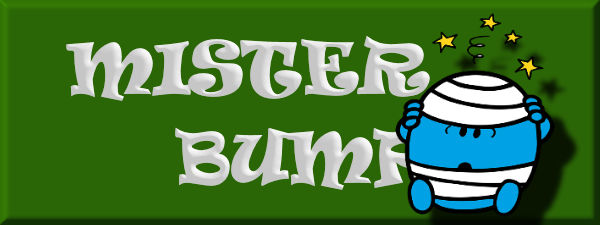I did my last voluntary session of the year yesterday. Nothing more, until January. Whilst there is something I want to do on my current project, I have been putting it off these last couple of weeks, so a couple more won’t make much difference. So what better excuse to amuse myself than by sitting back and pontificating about Fandango’s latest Provocative Question challenge?
This week, Fandango asks whether music is the universal language which some say it is.
I do have some thoughts of my own – in general, yes, but I’m aware that some cultures have very different tastes in music to our own, so while the concept just of the term music is probably pretty universal, individual pieces of music probably aren’t universal. I find, though, that I have met bloggers on here, for whom English is not their first language but there is usually common ground, initially with music.
But I’d like to put my own views to one side today, if only because I’ve never articulated them before, so could foresee hours of bludgeoning ahead in order to turn the post into something readable. Instead, I want to talk about NASA’s view.
In 1977, NASA launched the Voyager spacecraft, its five year mission to explore strange new worlds. To seek out new life and new civilisation. To boldly go where no man had gone before. Actually, I might be getting a little confused there 🙄.
However, Voyager contained two so-called golden records. As you might imagine these were phonographs containing all sorts of data, not just music but including music, as it began its journey into space. It has currently gone beyond the farthest planet, although it is still in our solar system – journeying through interstellar space, destination nowhere in particular. Any civilisation reading the phonographs should be assumed to be pretty advanced – after all, most human beings can’t read phonographs any more – but I’m sure NASA included an instruction manual!
So NASA clearly decided that music was not only a way to bridge barriers between cultures, but between worlds! The contents were chosen by a NASA committee chaired by the late Carl Sagan. The committee obviously thought that this was the best the earth had to offer.
I’m gonna reach for Wikipedia to help me from this point, and list the contents of the disks. Maybe you’ll recognise some of it? Maybe not?
- a greeting from Kurt Waldheim, who at the time was the Secretary-General of the United Nations
- Greetings in 55 Languages
- Greetings / Whale Songs
- “The Sounds of Earth”
- The Brandenburg Concerto, by Bach
- Ketawang: Puspåwårnå (Kinds of Flowers)” (by Pura Paku Alaman Palace Orchestra
- Cengunmé (by Mahi musicians of Benin)
- Alima Song (by Mbuti of the Ituri Rainforest)
- Barnumbirr (Morning Star) and Moikoi Song (by Tom Djawa, Mudpo, and Waliparu)
- El Cascabel (Lorenzo Barcelata) (by Antonio Maciel and Los Aguilillas with Mariachi México de Pepe Villa/Rafael Carrión)
- Johnny B. Goode (by Chuck Berry)
- Mariuamangɨ (by Pranis Pandang and Kumbui of the Nyaura Clan)
- Sokaku-Reibo (Depicting the Cranes in Their Nest)” (by Goro Yamaguchi)
- Partita for Violin Solo No. 3 in E Major (by Bach)
- “The Magic Flute (Mozart)
- Chakrulo (by Georgian State Merited Ensemble of Folk Song and Dance/Anzor Kavsadze)
Hold on, that was just the first disk. Disk Two:
- Roncadoras and Drums (by Musicians from Ancash)
- Melancholy Blues (by Louis Armstrong and His Hot Seven)
- Muğam (by Kamil Jalilov)
- The Rite of Spring (Le Sacre du Printemps, by Stravinsky)
- The Well-Tempered Clavier (by Johann Sebastian Bach)
- Symphony No. 5 in C Minor, (by Beethoven)
- Izlel e Delyu Haydutin (by Valya Balkanska)
- Navajo Night Chant, Yeibichai Dance (Ambrose Roan Horse, Chester Roan, and Tom Roan)
- The Fairie Round (by Early Music Consort of London/David Munrow)
- Naranaratana Kookokoo (The Cry of the Megapode Bird) (by Maniasinimae and Taumaetarau Chieftain Tribe of Oloha and Palasu’u Village Community)
- Wedding Song (by Young girl of Huancavelica)
- Liu Shui (Flowing Streams) (by Guan Pinghu)
- Bhairavi: Jaat Kahan Ho (by Kesarbai Kerkar)
- Dark Was the Night, Cold Was the Ground (by Blind Willie Johnson)
- String Quartet No. 13 in B-flat Major (Beethoven)
One thing I thought was hilarious was that the committee also wanted to include The Beatles’ Here Comes The Sun, but EMI refused the copyright. They obviously wanted to keep the sound for Earthlings only!

EMI is so bad! Not wanting to share anything with non-earthlings. I wonder if someone who has never heard music before will appreciate it. Music is believed to ‘send some vibes’ to the heart. And when it matches your natural heartbeat or some kind of flow in your body, you like the music. That could be why deaf people still can enjoy music, they feel it. So non earthling with a heartbeat will like some of the songs I think. EMI missed a chance there!
LikeLiked by 1 person
They should have sent this one, which was the Christmas #1 in 1971. This’ll get their vibes going!
LikeLiked by 1 person
Those from the Milkyway will know it for sure!
LikeLiked by 1 person
Out of this world!
LikeLiked by 1 person
😆
LikeLiked by 1 person